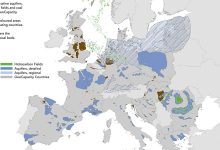Recalibration on the European Gas Market
Opportunities for Romania
On the background of the energy crisis stirred by the Russian-Ukrainian conflict, Romania and Serbia are interested in joining their efforts for developing a gas interconnector.
In May 2022, Zorana Mihajlović, the Minister of Energy of Serbia, met with her Romanian counterpart, Virgil-Daniel Popescu, to discuss several strategic lines of cooperation, namely the perspective of joint investment projects, the progress made in cooperation in the field of renewable energy, as well as an interconnection point between the two parties’ gas infrastructure.
At the time, Zorana Mihajlović said that Serbia would prepare the design and technical documentation for the construction of a gas pipeline that will connect Mokrin with the Romanian gas infrastructure, which would allow access to the transmission system operated by SNTGN Transgaz SA (the BRUA gas pipeline), but until recently no significant progress has been made.
However, in the spirit of historically good cooperation in the field of energy, the two countries are to revamp the idea of a natural gas interconnector and, so far, positive signs are on the horizon.
A document recently published by Transgaz, containing strategic projects, highlights that Romanian authorities are preoccupied with developing a partnership with Serbia that involves the realization of the interconnector, following the lines discussed in May 2022.
The interconnector should provide the junction between the natural gas transmission line BRUA and the Mokrin Technological Node in Serbia. The document includes several steps already carried out by the transmission operator, such as the feasibility study, the technical design, and the specifications.
It is estimated that the tender procedure for the execution of the works will start somewhere in 2026, and the value of the project is about 56 million euros, the completion being expected for 2028.
The project consists of the construction of an interconnection pipeline in the direction Arad – Mokrin with a length of about 98 kilometres, of which 85.56 kilometres on the territory of Romania and 12.8 kilometres on the territory of Serbia.
The sanctions adopted by the European Union against Moscow in response to the invasion of Ukraine are causing Serbia to reduce its dependence on the Russian Federation and identify alternative procurement solutions for oil and natural gas.
Serbia is one of the states overwhelmingly dependent on Russian gas, which has not yet joined the European Union’s sanctions policy imposed on Moscow following the conflict in Ukraine.
Taking into account Serbia’s claims to join the EU, the support of this project from the Serbian decision-makers is a good signal for the European leaders, given that it would reduce Serbia’s dependence on Russia by diversifying the country’s natural gas supply resources, while also being in line with the aim of reducing dependence on fossil fuels from the Russian Federation.
The project would bring benefits both to Romania (which would strengthen its role as a reliable partner that can provide energy security in the region) and Serbia, as Belgrade could diversify its supply resources, in line with the lines drawn by President Aleksandar Vučić.
It remains to be seen whether the draft remains on the agenda of the Serbian executive after the Parliament’s vote on October 26, 2022, for a new government. While the government is led by the same Ana Brnabić, a politician with a pro-Western vision, there is another energy minister in place, namely Dubravka Đedović.
The project could also gain even more strategic relevance to the extent that its infrastructure components are compatible with hydrogen, thus safeguarding the investment post-2050, the year when the European Commission has a legally binding target of achieving net zero.
At the same time, other infrastructure projects promoted by Transgaz, classified of national interest, are demonstrating the commitment of the Romanian National Gas Transmission System Operator to becoming a relevant player on the future hydrogen market.
In this respect, it is worth mentioning the TSO’s decision to rethink its procurement strategy, by aiming to purchase pipelines and other components which are hydrogen-ready.
In addition, the debut of the offshore production in XIX Neptun Block (deep water) may not coincidentally overlap with the date proposed for the realization of the Serbia–Romania interconnector and will certainly increase Romania’s credibility as a regional gas player.
Seemingly, Transgaz is efficiently exploiting opportunities that came along with the energy crisis, by placing a focus on developing a starshaped transmission system, while abandoning linear, unidirectional transmission projects.
This approach is more much more suited and articulated around Romania’s declared ambition of becoming a local energy hub.
The importance of gas infrastructure projects
Despite existing opposing of views on the role of natural gas in the energy transition at a European level, we can still observe a significant interest for developing the gas infrastructure.
The investment decisions in this direction should not take us by surprise, taking into consideration that natural gas continues to play a pivotal role in ensuring the energy security of the European continent.
On the official website of the European Commission, 6 out of 11 items aimed at strengthening energy security are directly or indirectly dedicated to the security of supply of natural gas, while only 1 item is specific to electricity. Other 2 items are technologically neutral.
Romania, part of the so called ‘like-minded’ states, stands out within the EU by using both natural gas and energy from nuclear sources to ensure a just energy transition.
In July 2022, the attempt to remove investment in projects dedicated to gas and nuclear from the list of those compatible with the EU Taxonomy failed to get the necessary vote of MEPs, obtaining only 278 votes. To reject gas and nuclear from the Taxonomy logic, a minimum of 353 votes would have been needed.
On the other hand, the new solidarity contribution imposed by EU Regulation 2022/1854 could hamper the development of new natural gas exploitation projects, which could diminish the EU’s aspirations to strengthen its strategic energy autonomy.
Despite these (seemingly) contrasting policies, the role of natural gas in ensuring European energy security remains undeniable, a fact which is also visible within RePowerEU legislative package proposal.
In fact, one of the two main pillars of the policy document is dedicated to diversifying gas supply sources, the other being assigned to accelerating the energy transition.
The perspective of an interconnection point between Romania and Serbia is not the only action aimed at achieving the status of a relevant energy player on the natural gas market.
We already see the success of enlisting the underground gas storage facility in Bilciuresti on the 5th list of Projects of Common Interest and which will benefit from EUR 38 million non-reimbursable funding, through the Connecting Europe Facility (CEF) programme.
In addition, Romania also announced the prospect of a floating LNG terminal in its own offshore area, in fact, a refurbished version of the former Azerbaijani gas import project aimed at bringing gas from the Caspian region via Georgia (AGRI project).
The race for the status of a natural gas hub
We find ourselves, in fact, in the middle of a continuous race for the status of a natural gas hub and the European aspirations in this regard continue to manifest themselves more or less quietly.
Shortly after the decrease and, afterwards, cease of natural gas exports through Nord Stream 1 and 2, we are witnessing Vladimir Putin’s support in favour of Turkey as a gas hub for supplies to Europe.
After meeting with his counterpart, Recep Tayyip Erdoğan, in the latter part of 2022, Vladimir Putin clearly affirmed his support for Turkey to replace Ukraine as a transit country for Russian gas to Europe.
At the same time, the prolongation of the Russian-Ukrainian conflict, coupled with the firm decision of the European Commission to distance itself in energy terms from the Russian Federation, generated the recalibration of European supply strategies.
The European natural gas market has no other choice, at least on the short term, but to prepare and adapt to the international LNG market.
The project of Poland’s LNG terminal in Gdansk will benefit from approximately 20 million EUR in European funding through CEF. Germany is seeking to import more LNG volumes and is keen on developing its own regasification capacities.
Locally, Bulgaria signed a protocol with Turkey aimed at facilitating access to Turkey’s LNG capacities and be a relevant part of the South Corridor, even with the risk of sourcing Russian gas and not gas of other origins.
On the other side of the European continent, France and Spain are reconsidering the usefulness of the MidCat interconnector, a project initially aimed at facilitating the gas flow between the two Member States.
Moreover, the project is now more extensive in its approach, by also ensuring interconnectivity with Portugal and Germany, a decision based upon the fact that Spain owns around 35% of the European LNG storage capacity.
In December 2022, the project was refurbished almost entirely and promoted under a new name, the BarMar underwater pipeline project, which will act as a green corridor for hydrogen and, during a transitional phase, for natural gas.
Initially abandoned for alleged climate reasons, the new version of the MidCat project implies its compatibility with green gases, including hydrogen, thus reflecting the principles set out in RePowerEU.
Romania’s determination to develop a gas hub
Despite negative geopolitical implications of the conflict in Ukraine, especially in terms of energy resilience, the raging war also brings forth a silver lining, more specifically a chance for Romania to advance its gas hub ambitions.
The support schemes implemented at European level, coupled with the need to rethink both the Power and Gas markets, involve an overall reset of the progress made by the Member States in relation to the objective of having a single and fully liberalised European natural gas market.
For Romania, this reset implies the chance of catching up with the liberalization of its own natural gas market, in the context in which the local attempts have registered a rather sinusoidal route, where liberalized market principles alternated with regulated market principles.
We might now find ourselves at the beginning of a new race, which means a new chance to start building from the ground and keeping pace with the rest of the EU community. An Action Plan centred around exiting the regulated market paradigm and gradually embracing free market principles is highly needed.
For Romania the opportunity is even bigger, taking into consideration the decline of the Ukrainian gas transit route in terms of relevance.
As a direct result, we will likely observe a decrease in Brotherhood’s importance as a gas pipeline, which is traditionally regarded as a main corridor for gas transmission from Russia to Europe.
The Brotherhood gas pipeline is the main artery of the gas infrastructure that connects the Russian Federation to Europe, being, at the same time, one of the main gas discharge points in the Austrian Central European Gas Hub.
The gas pipeline crosses Ukraine, Slovakia, Austria, ensuring the supply of Europe and, to the extent that it ceases to be used, over time it will diminish the relevance of the Austrian VTP.
On a positive level for Romania, this development generates opportunities in order to bridge (already accumulated) gaps in light of its strategic ambition to become a gas hub.







